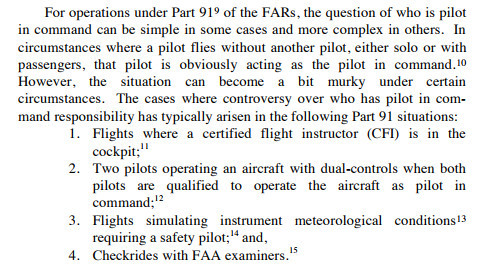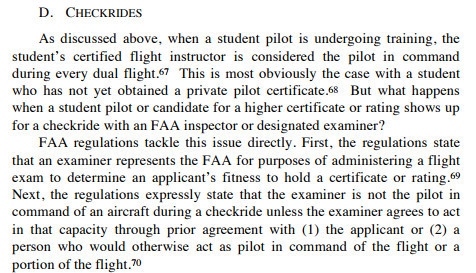I think this probably comes down to defining what we mean by taking control.
For example, if you are flying on a genuine training flight where the instructor is PIC, I don’t think we have much right to complain if the instructor starts to fiddle with the avionics (unless it’s something that you’re tracking at that given moment).
However how many of us would be happy to fly with another pilot (passenger) who just started fiddling with things without asking first? Not me! Their experience level would be irrelevant to me. If I’m flying they touch nothing other than if they ask first, or are told to do something, at least during routine operations.
It’s when things start to depart routine operations that things start to get a bit murky.
If you’re assigned a particular altitude, but you’re wandering off the altitude, what does the other pilot do?
Shut up and say nothing because you aren’t part of the crew and shouldn’t be assuming any responsibility?
Subtly bring the pilot’s attention to it by asking what was the level that was assigned?
Advise the pilot that they might want to check the altitude?
Take the controls and fix the situation?
To me all are valid reactions except the last one assuming no danger is involved. However which brings offence or brings on a sense of deferential behaviour depends a lot on the pilots involved. But then when do you do this? If you normally maintain your altitude to within 10 ft, and a 50ft deviation offends your sense of perfection do you take your action at 50ft error? Or do you wait for 200ft before doing something?
What about the situation where you’re flying in a valley where the weather is less than ideal. You start to have concerns about the weather and the pilot’s decision making? They may know exactly what they are doing and have an escape route, but it’s also possible that they may just be fat dumb and happy in their ignorance of the danger. What do you do?
Shut up and say nothing because you aren’t part of the crew and shouldn’t be assuming any responsibility?
Subtly bring the pilot’s attention to it by commenting that the weather doesn’t look great.
Advise the pilot that you have serious concerns and aren’t very comfortable?
Take the controls and fix the situation?
What about the situation where the pilot has just taken off and has an engine failure on takeoff but fails to react properly by getting the nose down? Instead they start doing engine checks and the stall warner goes off and they continue with the engine checks? What do you do?
Shut up and say nothing because you aren’t part of the crew and shouldn’t be assuming any responsibility?
Subtly bring the pilot’s attention to it by asking what’s the warning sound?
Advise the pilot that they are in danger of stalling and should get the nose down instantly?
Take the controls and fix the situation?
I’d suggest that in the first two situation taking control would be a totally inappropriate reaction, but in the third situation it would be totally appropriate (at least as far as pushing the control column forward).
In the first situation saying nothing might be a valid action, but I’d certainly hope that any pilot in the second situation would somehow raise their concerns. Perhaps I’ve everything totally under control and the passenger doesn’t realise that I have multiple escape routes, but by voicing their concerns they can learn of those and will be much more comfortable.
I think those of us saying that as a passenger we should do nothing are thinking of the first two situations and those of us saying we should take control are thinking of the third situation.
Colm
Any updates on posts 15 and 25?
Otherwise it could be like the reports of the 10k fines or aircraft confiscation for busting the French nuclear ZITs. Very hard to find any info on these.
I am very happy to continue to completely disbelieve it until someone publishes the case law.
It’s probably not true – at least not as told.
There will be no statute at all on things like this, and depending on jurisdiction, probably almost no case law. It’ll be down to what a judge/jury decides, which may vary from one case to another.
If a claimant managed to convince a judge/jury that an instructor sat in the rear seat was PIC, then I’d say that instructor (or their estate if deceased) needs to find a better lawyer.
That said, such a claim may not be about who was PIC. It may simply be claiming that an instructor sat in the rear seat (or the front seat, but not as part of the crew) could and should have done something to try and avert the accident – which depending on the circumstances could well be a reasonable argument.
Peter – what was your reaction to the instructor claiming that it wasn’t a training flight after your prop-strike? Who signed the aircraft out in Operations (if such a thing happens at Shoreham)?
Welcome back Graham – been a few years 
what was your reaction to the instructor claiming that it wasn’t a training flight after your prop-strike? Who signed the aircraft out in Operations (if such a thing happens at Shoreham)?
It was my own plane, so no signing out etc. He said afterwards that since I was legally PIC for the taxi, he was not involved. I did later establish it was a training flight allright but there is no point in creating trouble on your own doorstep, ever, in GA.
If a claimant managed to convince a judge/jury that an instructor sat in the rear seat was PIC, then I’d say that instructor (or their estate if deceased) needs to find a better lawyer.
FWIW, I concur – it contradicts ICAO and the concept of PIC.
Timothy wrote:
No, the point at which you need to decide that you don’t want to entrust your life to a pilot is before you leave the ground.
Yes, but… just start reading accident reports until you become convinced that each of us at any time can fail no matter how many hours or how much experience we have. That goes for the person sitting next to you as well.
dublinpilot wrote:
I think those of us saying that as a passenger we should do nothing are thinking of the first two situations and those of us saying we should take control are thinking of the third situation.
Well thought out post.
dublinpilot wrote:
Or do you wait for 200ft before doing something?
It has indeed Peter – I’m feeling my way back into committing aviation again. Just got my SEP renewed.
At EGLM all based aircraft (even private) are supposed to sign in/out (with destination, and a note if not back that day) mainly so they know who to expect back and who to be worried about the absence of. For hangared aircraft I suppose it also affects the ground crew end-of-day shuffles.
Given one signs one’s name as the commander, this rather nicely clears up any later issues (presumably when something goes wrong) about who was in command.
In the court of common sense, one could argue that if an instructor was on board, assuming he/she’s not a friend of yours, then what else could it be but a training flight? Why is he/she on board if not to train? If he/she is/was paid for being there then the argument is even stronger. But as you say, it’s not worth causing hassle.
This was posted in another thread today. It’s an interesting take on instructor liability from the US point of view.

This is pretty interesting too

I bet it doesn’t work outside the USA… FAA checkrides in G-regs were blocked by the UK CAA many years ago after a crash where the DPE was sitting in the back of the plane; he was in the back because UK regs required the holder of a UK CPL to sit in the RHS because the flight was instructional and the FI needed a CPL. This has changed somewhat since…
Peter, I always thought in an EASA Region aircraft the FE isn’t PIC either during the check ride? My logbook says I was PIC that day.